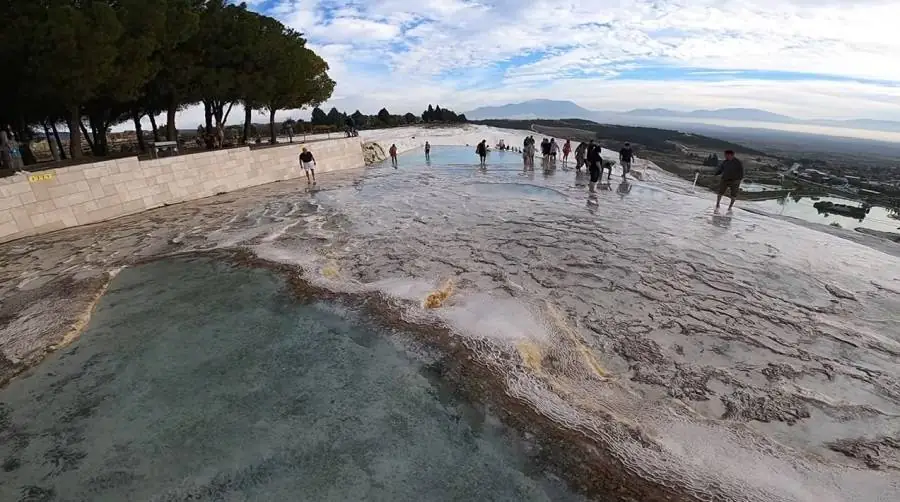Pamukkale once again ranked among the top tourist destinations during the nine-day holiday commemorating the Feast of Sacrifice. Tens of thousands of domestic and international visitors favoured travertines over Kocaçukur and Turkey’s largest themed urban forest, the Pamukkale Municipality Seyir Tepesi Urban Forest.

Tens of thousands of domestic and international visitors returned to Pamukkale, one of Turkey’s most significant tourist destinations. Pamukkale was once more in the spotlight during the 24-day Feast of Sacrifice event, which ran from June 2 to July 9.
Locals and visitors from other countries enjoyed Pamukkale because of its travertines, which at the time resembled white cotton. At the foot of the white paradise, at the Pamukkale Municipality Kocaçukur Facilities, locals who dipped into its curative waters enjoyed themselves. The visitors who went for a canoe excursion in Kocaçukur Pond had a different perspective on the travertines and fed the ducks and geese there. Tens of thousands of visitors descended on Kocaçukur and the Pamukkale travertines over the course of the Feast of Sacrifice.
Municipality of Pamukkale, one of the popular tourist destinations in the Pamukkale neighbourhood, was Seyir Tepesi City Forest. Municipality of Pamukkale All ages of visitors visited Seyir Tepesi City Forest, Turkey’s biggest themed urban forest.
♦ Pamukkale Day tour from Istanbul
The most well-liked locations were playgrounds for kids, a zipline, a mountain sled, an adventure track for teens, and a wonderful view of Denizli. The visitors, who got the chance to view the city from various angles, also profited from the cafeterias and enjoyed exquisite cuisine at the Seyr-Et restaurant. One of the popular destinations for the Kurban Bayram trip was Seyir Tepesi.
The Best Time to Visit Pamukkale
When considering the best time to visit Pamukkale, it is essential to take into account the weather and the overall experience you seek. Ideally, the months between April and June, as well as September and October, offer pleasant temperatures and fewer crowds. During these periods, the weather is generally mild and comfortable, allowing visitors to fully enjoy the unique beauty of Pamukkale’s terraces and the ancient ruins of Hierapolis. However, if you prefer warmer weather and don’t mind larger crowds, the summer months of July and August can also be a viable option. Whichever time you choose, a trip to Pamukkale promises awe-inspiring natural wonders and a glimpse into the region’s rich history.

